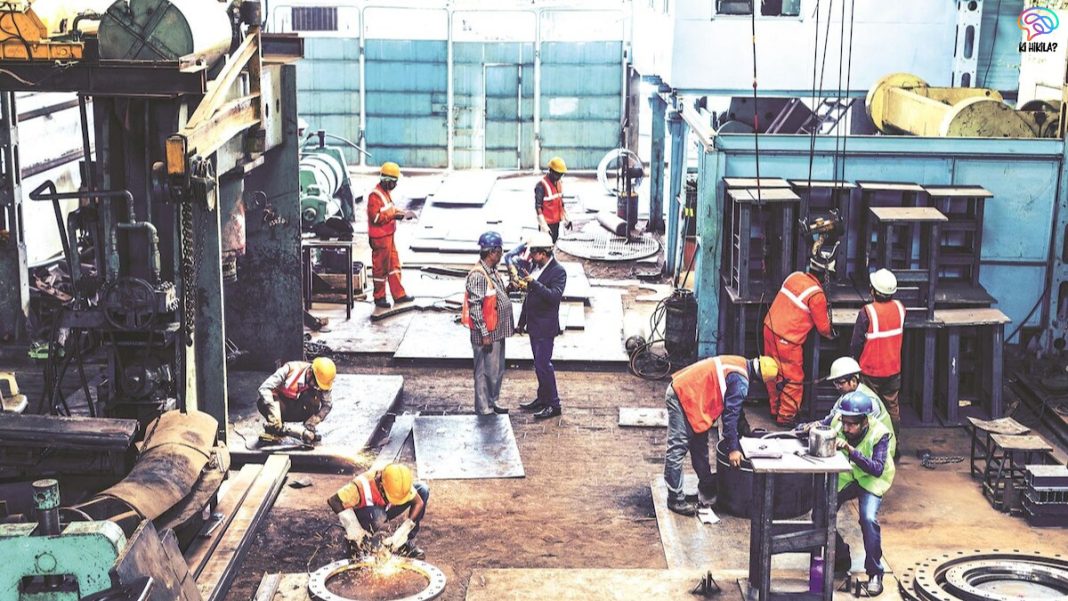India’s Labour Productivity Gap has emerged as one of the most pressing challenges in the country’s path toward becoming a $36 trillion economy by 2047. While the government recently announced the creation of 17 crore jobs over the past decade, experts warn that employment alone is not enough. The real hurdle lies in bridging the vast productivity divide between India’s formal and informal workforce. Unless addressed, this gap will limit income growth, slow economic inclusion, and weaken the foundation of long-term structural transformation.
The Productivity Divide Between Formal and Informal Sectors
Formal industrial workers in India generate an annual Gross Value Added (GVA) of around ₹12 lakh per worker. In contrast, informal sector workers produce only about ₹1.5 lakh annually. This eightfold difference underlines the staggering productivity chasm. Currently, 91 per cent of India’s workforce remains informal, while only 9 per cent are formally employed. The dominance of low-output informal labour drags down average incomes and masks the true economic potential of India’s working population.
Wage Disparity and Labour Market Dynamics
In theory, wages should correspond with productivity levels. However, in India, the overwhelming size of the informal workforce distorts this balance. Excess labour supply suppresses wages despite rising productivity in formal jobs. Agriculture exemplifies this imbalance—it employs 42 per cent of workers but contributes just 18 per cent to GDP. This signals widespread disguised unemployment and near-zero marginal productivity. Without correcting such imbalances, India’s wage growth will continue to lag behind its economic output.
Formalisation as a Policy Priority
Closing India’s Labour Productivity Gap requires large-scale formalisation of jobs. Formal employment provides social security, stable contracts, and skill development opportunities. Initiatives such as e-Shram, ESIC, and EPFO need to be expanded for universal coverage. At the same time, small businesses and gig economy platforms must be incentivised to shift toward formal contracts through simplified regulations and tax benefits. A dedicated Formalisation Index could serve as a yardstick to track progress and highlight areas requiring urgent reform.
Addressing the Skills Deficit in India’s Labour Productivity Gap
A major barrier to productivity is the lack of a skilled workforce. Only 4.7 per cent of India’s workers are formally skilled, compared to over 50 per cent in advanced economies. This severe skills gap restricts mobility into high-value sectors. Scaling up training through the National Skill Development Corporation and Industrial Training Institutes is essential. Training programmes must incorporate emerging domains such as artificial intelligence, digital tools, and green technologies. Stronger collaboration between industry and academia will help ensure skill training aligns with real-world job requirements.
Linking Wages to Productivity Through Innovation

For India to narrow its labour productivity gap, wage systems must better reflect worker output. Performance-linked wage models in organised sectors such as textiles, electronics, and services could serve as templates. Even public programmes like MGNREGS could consider introducing modest performance-linked bonuses while safeguarding worker rights. Digital technologies—AI, IoT, and big data—can provide accurate, real-time productivity tracking. National platforms such as ASEEM and DigiLocker can create unified worker profiles, linking skills, wages, and career progression across industries.
Harnessing the Demographic Dividend
India’s young population offers a demographic advantage unmatched by most countries. But without adequate formalisation and productivity improvements, this dividend risks turning into a liability. Economic growth must be accompanied by rising wages and secure employment to ensure equity and stability. Structural reforms to enhance productivity and equitable wage distribution are essential to prevent social unrest and inequality. Failure to address these issues could trap India in a low-income cycle dominated by a small, high-output formal sector and a vast, low-output informal base.
Conclusion
India’s Labour Productivity Gap is more than an economic statistic—it is a defining challenge that will determine whether India achieves its ambitious growth goals. Closing this gap requires a multi-pronged approach: formalising employment, upskilling workers, linking wages to productivity, and leveraging digital innovation. If India succeeds in narrowing this divide, it will unlock the full potential of its workforce, turning demographic strength into an engine of inclusive and sustainable economic growth.




